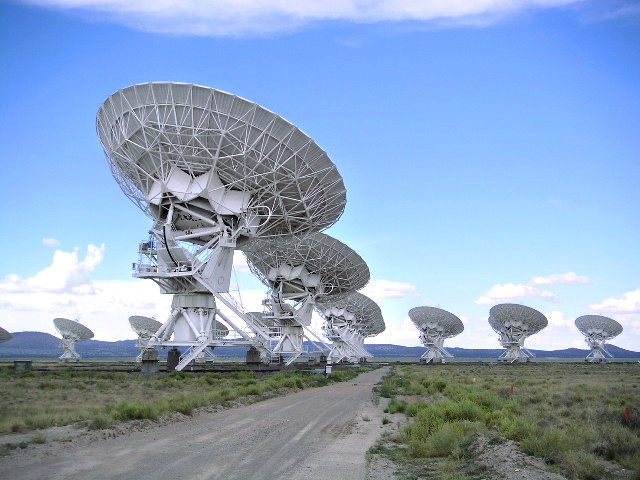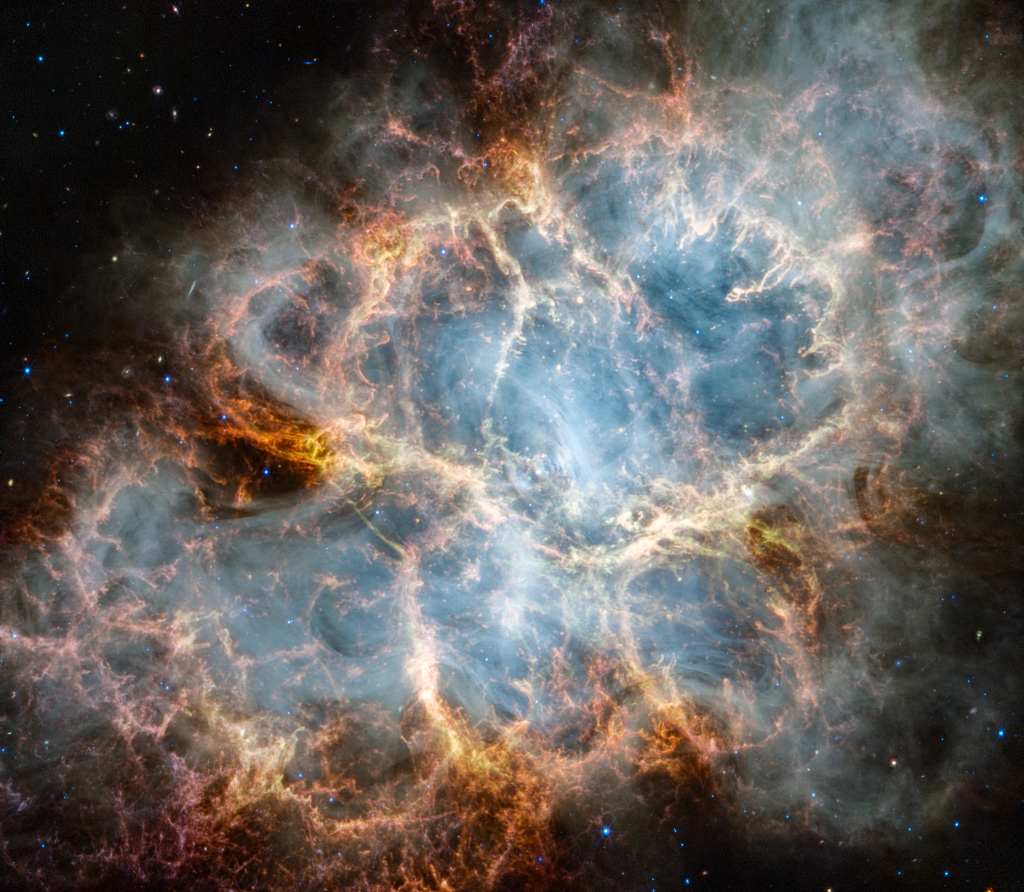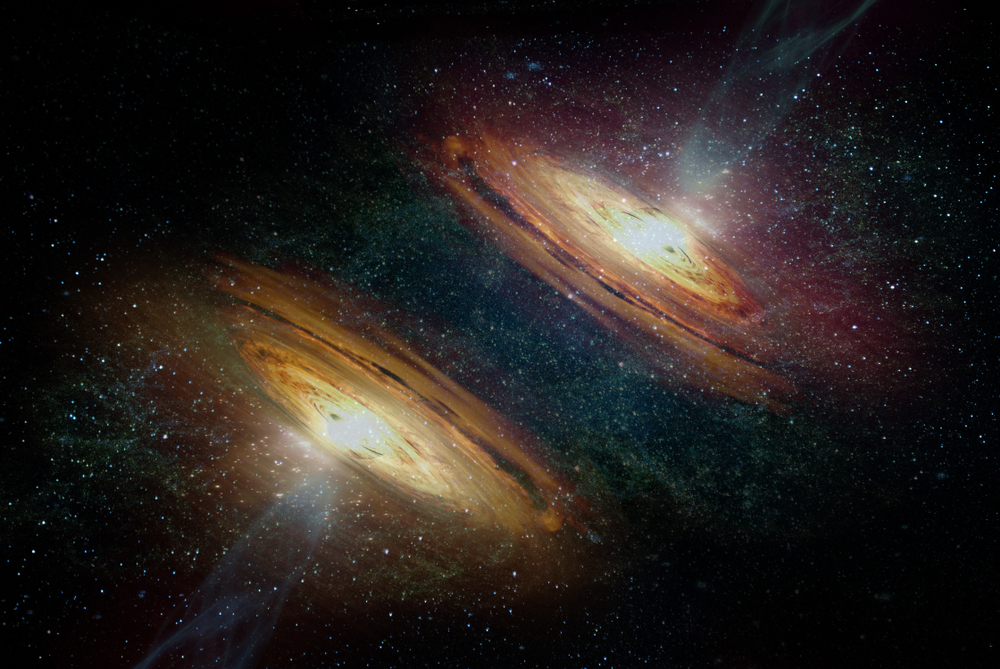Your cart is currently empty!
Racing Star Shatters a Giant Galactic Structure in a Discovery That Redraws the Milky Way

Something remarkable has surfaced in the quiet depths of our home galaxy, a place where light and shadow weave through ancient space. Astronomers studying an unusual thread of cosmic energy noticed a subtle break in its structure, a disruption that hints at a dramatic encounter many thousands of years in the past. What first appeared to be an elegant strand drifting near the center of the Milky Way may actually carry the imprint of a compact star that rushed through it at extraordinary speed.

This filament, known to researchers as G359.13, stretches across an immense span of space and glows with a mixture of radio and X ray activity. It belongs to a family of long luminous structures that trace magnetic pathways through the inner regions of the galaxy. As charged particles race along these invisible lines, they leave behind radiant signatures that outline what some scientists describe as the hidden architecture of the Milky Way.
How Scientists Uncovered the Hidden Forces Shaping a Galactic Filament
Researchers studying the heart of the Milky Way are learning far more about how the galaxy’s magnetic architecture grows and changes, thanks to an exceptionally detailed investigation of the filament known as G359.13. By bringing together X ray observations from NASA’s Chandra Observatory and high resolution radio data from MeerKAT and the National Science Foundation’s Very Large Array, the team was able to observe both the energetic behavior and the magnetic structure of this filament at the same time. The two types of data complement each other in an essential way since X rays reveal the acceleration of very energetic particles while radio wavelengths trace the sweep of magnetic fields and the glow of synchrotron radiation. The findings, published in the Monthly Notices of the Royal Astronomical Society, show that a break in the filament lines up perfectly with a bright X ray and radio source that behaves like a pulsar, confirming the presence of a neutron star created after a massive supernova.

Neutron stars are incredibly dense remnants that can rotate with astonishing speed, and their magnetic fields can channel radiation in focused beams that sweep through space. The study proposes that this particular pulsar is hurtling through the region at nearly two million miles per hour and that its passage through G359.13 bent and disturbed the surrounding magnetic field lines strongly enough to create the visible fracture astronomers see today. That same disturbance appears to have energized nearby particles, leaving behind a striking trail of X rays captured by Chandra. This type of interaction may help explain the unusual bends and gaps seen in other filaments around the Galactic Center, suggesting that these features are not the result of random processes but are signatures of high speed stellar remnants moving through a crowded and energetic environment. The work also highlights the broader importance of these magnetic structures since they help regulate how matter and energy circulate in the inner Milky Way, offering a clearer picture of the forces that shape the galaxy’s core.
What Magnetic Filaments Reveal About the Milky Way’s Inner Structure
Astronomers studying the region near the Galactic Center continue to uncover a remarkable web of magnetic threads that stretches across vast distances and binds the inner Milky Way into a more organized environment than it first appears. Filaments like G359.13 are not isolated structures but parts of a wider network that may extend for hundreds of light years, creating channels where energy and particles flow in unexpected ways. These formations belong to a category known as nonthermal radio filaments, long and luminous strands filled with relativistic electrons that travel close to the speed of light. As these electrons spiral along magnetic field lines, they emit the radio waves detected by observatories such as MeerKAT, giving researchers a way to peer through the heavy clouds of dust that normally hide the Galactic Center from view.

Their presence suggests that the core of the Milky Way is shaped by strong and coherent magnetic fields that are capable of arranging charged particles into well defined pathways. By examining each filament’s alignment, brightness, and frequency patterns, scientists can trace the direction and strength of the underlying magnetic fields and see how they interact with nearby molecular clouds. This interaction appears to influence the distribution of gas and may even play a role in where and how new stars form. The region around the Galactic Center functions as a powerful natural laboratory where the combined effects of magnetic forces, intense radiation, and gravitational pull are easier to observe than in distant galaxies with similar activity. Understanding the structure and behavior of these filaments offers a clearer view of the processes that govern some of the most energetic environments in the universe.
How Scientists Measure an Object Racing Through the Galaxy
What truly elevates this discovery is the challenge of proving that an object is moving at more than two million miles per hour. Astronomers rely on precise techniques to calculate the motion of fast moving remnants, and these measurements require years of consistent observation. One of the primary tools for determining such speeds is proper motion tracking, where researchers compare the object’s position on the sky over multiple epochs using high resolution instruments. Even the smallest shift can reveal enormous velocities once scaled to the object’s distance from Earth. In this case, the combination of X ray and radio observations made it possible to detect subtle changes in position while also identifying the energetic signature of a rapidly rotating neutron star.

This type of measurement places the object among a very small population of extreme velocity stellar remnants. Hyperfast neutron stars are rare because they require a highly uneven explosion during a supernova, which only occurs when internal forces collapse inward and rebound outward in a way that produces an unbalanced push. When such an event happens, the leftover core can be propelled through space with extraordinary momentum. Objects capable of reaching this speed offer scientists a way to study the physics of supernova explosions themselves since their motion preserves information about the initial force and direction of the blast. Observing a pulsar with such dramatic acceleration provides insight into the violent events that shaped the galaxy’s past and helps refine models of how energy and matter are redistributed after a star’s death.
What the Collision Reveals About the Milky Way’s Ancient Past
The identification of an object moving at extraordinary speed does more than highlight an unusual stellar remnant. It also provides a rare timestamp that helps astronomers reconstruct historic events near the Galactic Center. When a neutron star tears across space at such velocity, it preserves clues about where it formed and how long it has been traveling. By tracing the object’s current trajectory backward, researchers can estimate the location of the supernova that created it, building a clearer picture of past episodes of star formation in one of the most turbulent regions of the Milky Way. These reconstructions allow scientists to map the sequence of stellar births and deaths that shaped the environment surrounding the galaxy’s central black hole.

This information is especially valuable because direct observation of the Galactic Center is extremely difficult. Dense clouds of gas and dust obscure much of the region, and strong radiation often complicates measurements. A neutron star traveling at more than two million miles per hour essentially acts as a messenger from a previous era, carrying information about the conditions that existed when it was first launched from its birthplace. By studying its direction, speed, and age, astronomers gain insight into how frequently massive stars once exploded near the center and how those explosions influenced the motion of surrounding gas. This type of historical reconstruction deepens our understanding of the Milky Way’s long term evolution and reveals how the galaxy’s core has been shaped by cycles of intense activity followed by periods of relative calm.
Why This Discovery Matters for Our Understanding of the Galaxy
The encounter between a speeding neutron star and a fragile magnetic structure offers more than a striking example of cosmic violence. It illustrates how even a single object, launched from the aftermath of a distant supernova, can leave a lasting imprint on the Milky Way’s inner environment. The fractured filament, the energetic trail, and the unusual velocity all act as signposts that guide astronomers toward a deeper understanding of the forces shaping our galaxy. Events like this remind us that the cosmos is not a static landscape but a place where motion, energy, and gravity continuously sculpt the spaces between stars.

This discovery also expands the way we think about the Galactic Center. Instead of viewing it solely as a region defined by darkness and dense clouds, researchers can now approach it as a dynamic archive of past explosions and interactions. Every high speed remnant, every bent strand of magnetic material, and every unusual glow contributes to a much larger story about how the Milky Way has evolved across millions of years. For readers, it becomes a reminder that even the most distant parts of the universe hold clues about movement, transformation, and resilience. The galaxy is constantly reshaping itself, and each new finding helps illuminate the hidden processes that keep it alive and endlessly changing.
Featured Image from NASA/CXC/NGST, Public domain, via Wikimedia Commons
